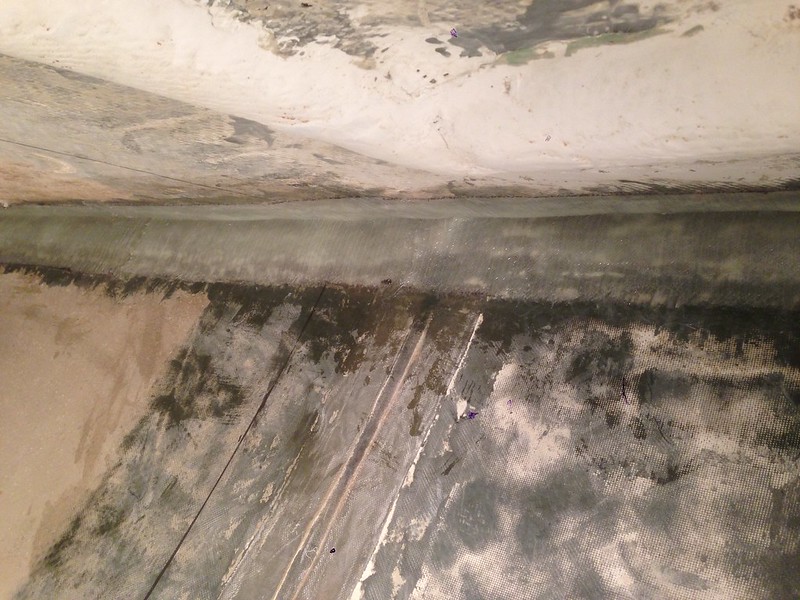Thinking of the Triton owners I have breakfast with every first Sunday of the month......
Known as the Alberg Design Fleet of San Francisco Bay ( it's a change-up
of the S.F. Triton Assoc.) http://albergsailboats.org/about-the...ation/mir.html
....there's maybe one skipper who might be persuaded to rehab the seam.
Remainder are more interested in what to cap over the seam with as a rubrail.
(which ranges from teak to recycled polyethylene flooring.)
Some kippers will venture out into the ocean to Drakes Bay, three are planning a voyage to the San Juans in 2014.
I wonder what they think about the seam.....?
Rob Bordering is the administrator. And he is someone worth asking about this serious matter.
On the ADFSFB site look up Alberg Sailboats - Maintenance, Improvements & Restorations
Which is archived from the now defunct National Triton Association.
One entry on the seam but it's cosmetic. Haven't searched thoroly.
Another source might have been TimLackey www.lackeysailing.com/ AND www.triton381.com/
I don't believe the hull/deck seam issue ever came up.
Also James Baldwin www.atomvoyages.com/ has a very generous site for cruisers - and has accomplished
TWO CIRCUMNAVIGATIONS without (so far as I know) a whistle or a whisper about the seam !
[later EDIT] http://plasticclassicforum.com/forum has a Triton thread. Scroll to bottom of lead page to Miscellaneous Topics.
150 entries, but nothing specific about the hull/deck seam being a problem.
Basically, it looks like you will have to choose and invent your own method.
Obviously, biaxial glass can be used inside up in the cove - if your boat is stripped of everything but the main bulkheads
(which I personally would NOT rermove.) I'd work around them - especially if your boat is one with a starved hull.
If you are rennovating the inside with a mind to restoring it, your option is to build up the hull/deck lap seam from outside.
Clean up the outside seam by grinding and sanding. I'd get it nice clean & crisp with outer lip edge flat and right angled.
Whatever it protrudes from the hull: 7/8"- 3/4"?, get it fairly equal around the boat. Imco it's OK to reduce how much it sticks out....a little.
Then I'd ream the seam....probably with a 1/4" straight bit in a router fitted with a fence.
Go about half way in only! Then jam it with epoxy, fumed silica, chopped strand paste (after first slathering the open joint with liquid epoxy.)
That takes care of the seam. Let it set and clean it up. Then it's up to you.
If you are going to use biaxial tapes, you have to decide to what extent reinforcement you want.
I think about wrapping the joint from the top of the toerail over the joint protrusion, and stopping at the hull just where it tucks under.
Seriously consider epoxying in a mahogany filler strip (approx 3/4" x 1 1/2"?) that sits on the protrusion shelf and fills up to top of the rail.
Round over the wood and bottom lower glass lip ....[Ebb's schedule: tape the first run flat along the wood filler and the lap join, stem to stern.
Second tape goes from the bottom of the protrusion butted at (NOT turned down) the hull, wraps up over the first tape to the top edge. Biaxial does one turn.
Third tape goes from the toerail top ( NOT wrapping down to the deck) down over the first two - not tucking under to the hull. Another single turn. Three over the seam. Easy layup, easy to grind off the extras - to fill and fair - and get a clean molded look. Maybe need to use a long sandig board. Extra layer(s) could be added, for instance along the top where track might be added later......Just an idea......
Going down onto the hull itself is a can of worms. Impossible to fair for Awlgrip. I'd keep the wrap off the hull - AND out of the deck scupper.
Could add a final woven glass fabric over all... but you can't sand into it. Add back a substitute 'gel coat' of a white epoxy coating, 2 - 3 coats, to finish.
[A shippy thing to do:] gradually reduce the double lip protrusion (and wood filler strip) toward the bow and stern. Not all the way off!
Maybe last third of the run toward the bow and last one quarter of the run toward the stern. It's minimal but it'll show. Round edges and wrap.
The top will be reduced in width going forward and aft, and look mmmm mmmm good, like Alberg would!
It'll end up overall with a nice wider toerail that can be capped with varnish work.... as some Tritons are already.
Fair the vertical part of thw new sheer & screw a wood strake on it, OR better, paint it like the hull, like it came from the factory that way.
Finish it off by adding on half round rubrail, stainless or ipe.
It's not exactly a feather edged glass job. If Pearson left laminations thin at the top of the hull, backup baxial could be added INSIDE behind the sudden stop of the expanded toerail - layered in graduated widths. Could work imco. Good luck.




 Reply With Quote
Reply With Quote



 ]
]


